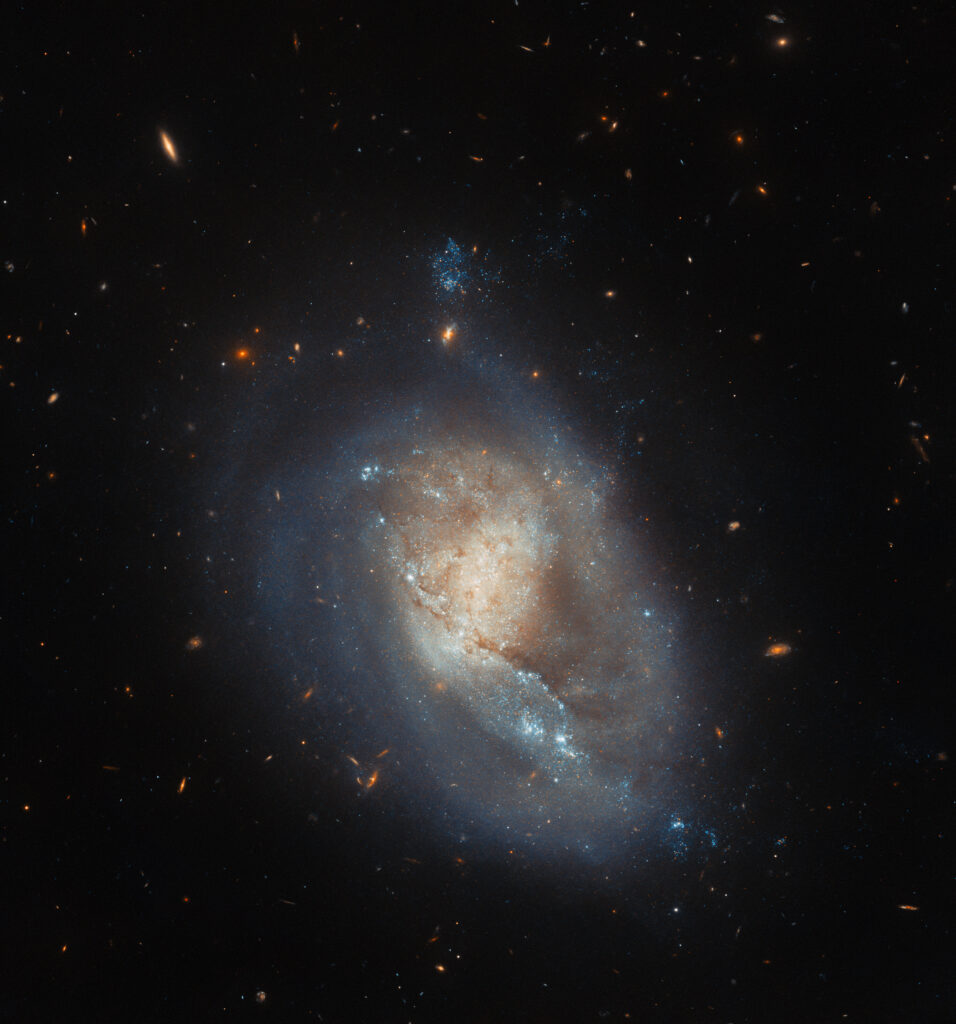The Hubble mission team has released a new image. It shows the dwarf galaxy IC 3476.

IC 3476 is located at a distance of 54 million light-years from Earth in the direction of the constellation Coma Berenices. In the Hubble picture, it looks serene. The center of IC 3476 is not particularly bright and is covered with dust, while the outer disk and halo swirl around it like streams of water.
But this is a deceptive impression. In fact, IC 3476 is literally under pressure. The fact is that intergalactic space is not completely empty. There may also be a substance in it, for example, incandescent plasma. And when the galaxy passes through it, this leads to the appearance of shock pressure. The process can be figuratively compared to the oncoming air flow during a car trip.
Further events may develop in several scenarios. In some cases, the resistance of the intergalactic medium can completely displace all the gas from the galaxy, which will make it impossible for new stars to form.
However, another option is also possible, when the pressure will lead to compression of the gas inside the galaxy. This is what happens in IC 3476. No stars are born at the edge of the galaxy, which is experiencing the brunt of the resistance, but in deeper regions of the galaxy the rate of star formation is noticeably higher than average. This is demonstrated by the numerous luminous spots in the Hubble image, marking areas where new luminaries are actively forming.
Earlier, we talked about how Hubble observed the birth of a giant star.
According to https://esahubble.org
Follow us on Twitter to get the most interesting space news in time
https://twitter.comne/ust_magazine


